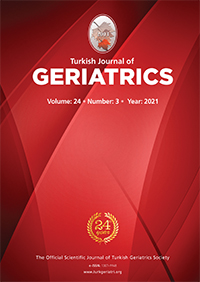Materials and Methods: This retrospective study included patients discharged from a palliative care center. The demographic and clinical features of the two groups, differentiated by length of stay, were compared.
Results: This study included 103 patients Group 1, n = 56, aged 67.7 ± 16.4 years and Group 2, n = 47, aged 67.6 ± 14.1 years. The length of stay in the center was 12.4 ± 4.8 days for Group 1 and 42.4 ± 15.8 days for Group 2. The number of patients with heart failure was higher in Group 2 than in Group 1 (p = 0.006), and the number of patients receiving oral nutrition was higher in Group 1 (p = 0.031). The gastrostomy status of Group 2 was higher than that of Group 1 (p = 0.035). Grades 1 and 3-4 decubitus ulcers were more common in Group 1 than in Group 2 (p = 0.009), and the lowest sodium levels were lower in Group 1 (p = 0.033).
Conclusion: Anoxic brain injury as a referral diagnosis, presence of heart failure, and lower serum sodium levels were associated with a longer length of stay in palliative care center. It is important to determine the factors affecting long-term hospitalization and discharge so that more patients can benefit from inpatient palliative care services.
Keywords : Palliative Care; Length of Stay; Patient Discharge
